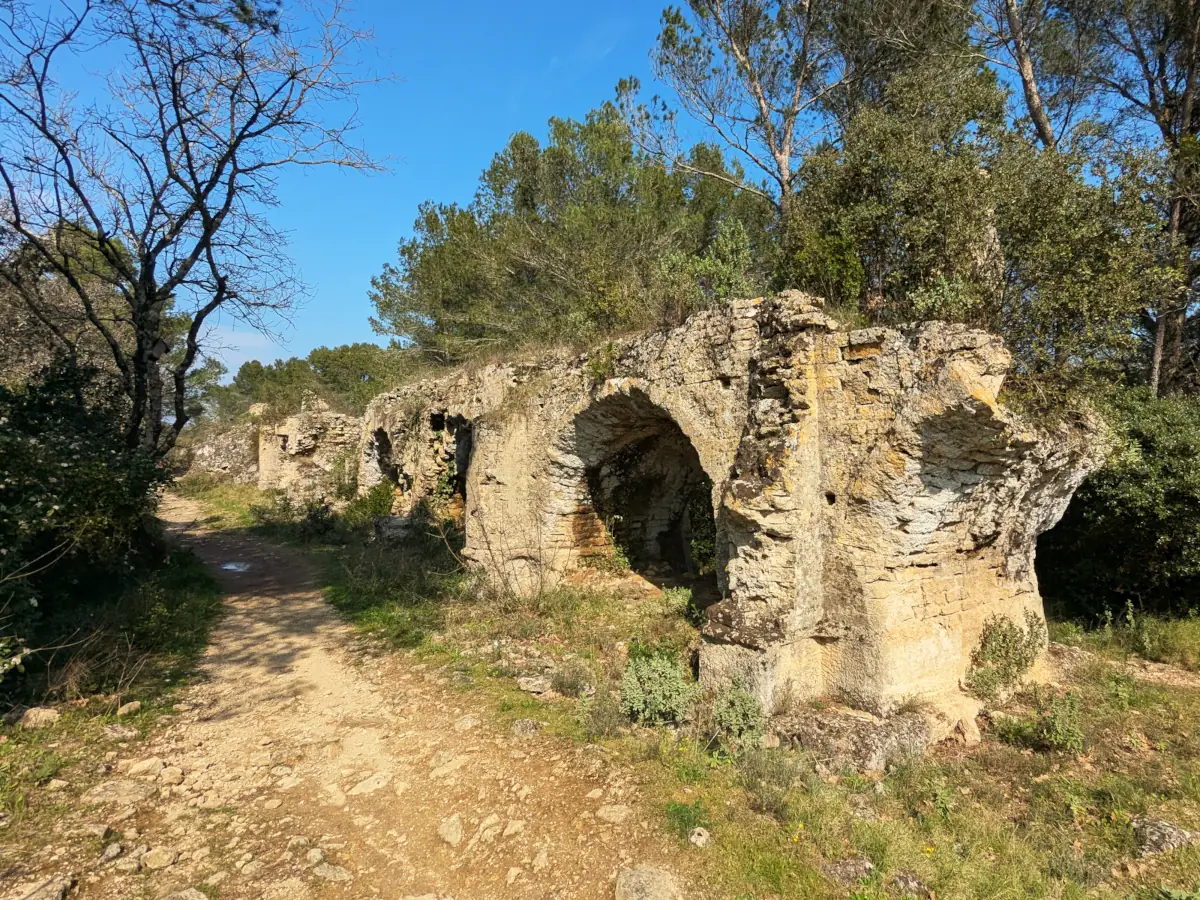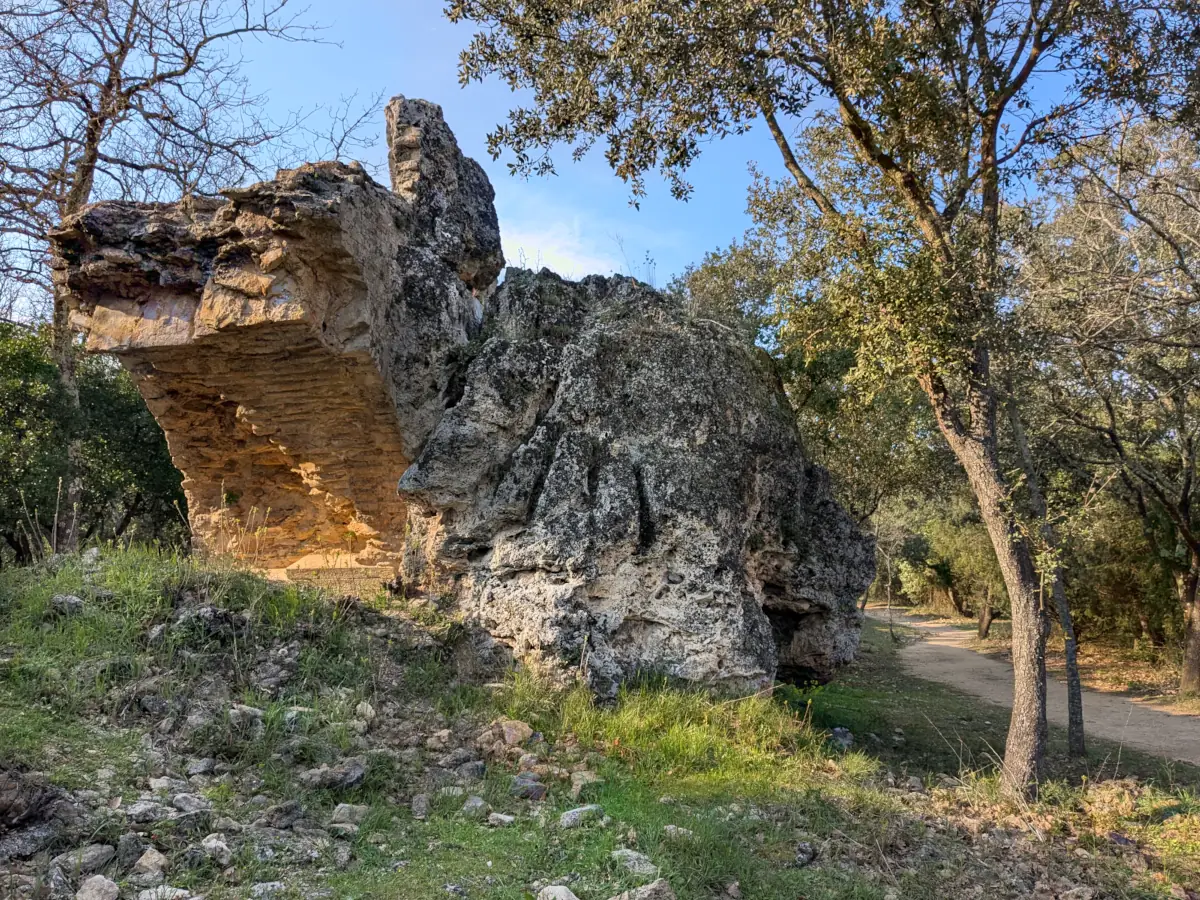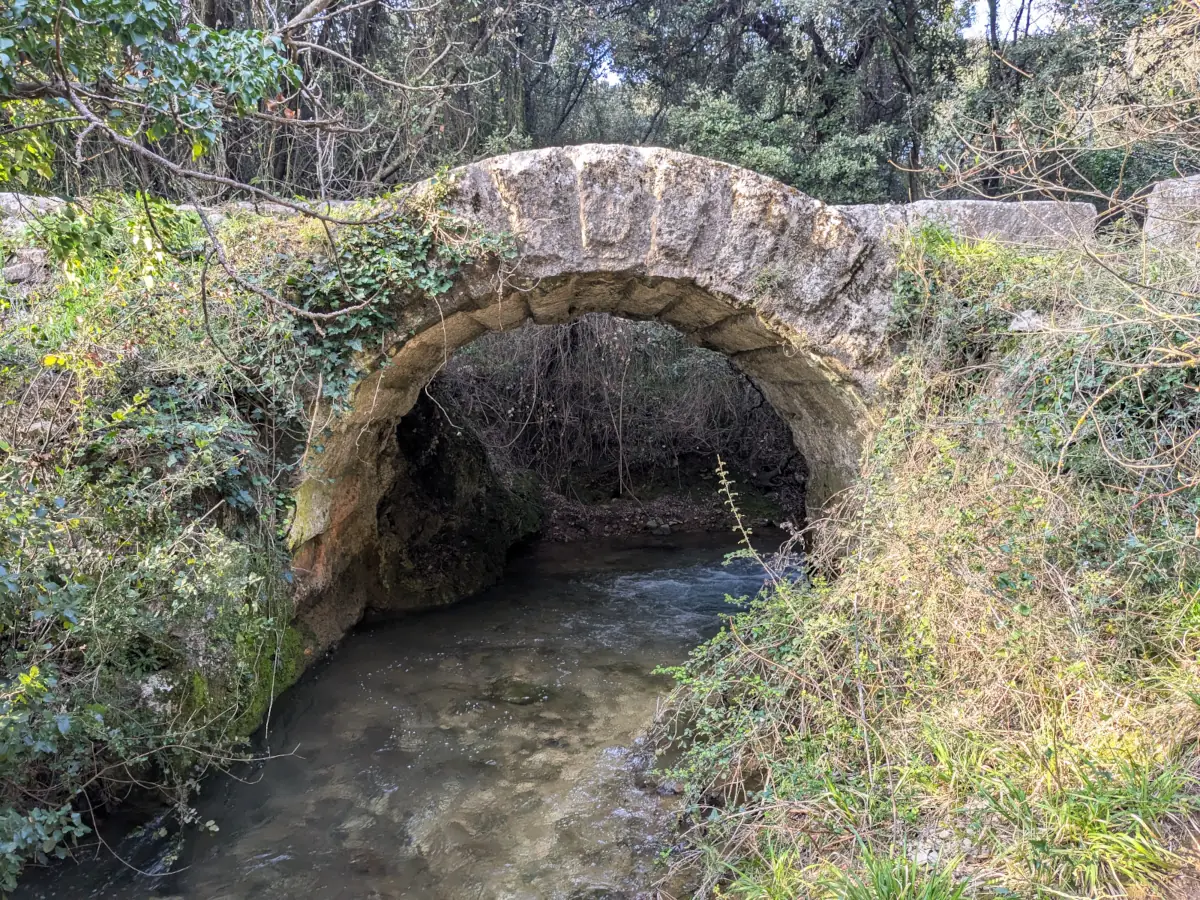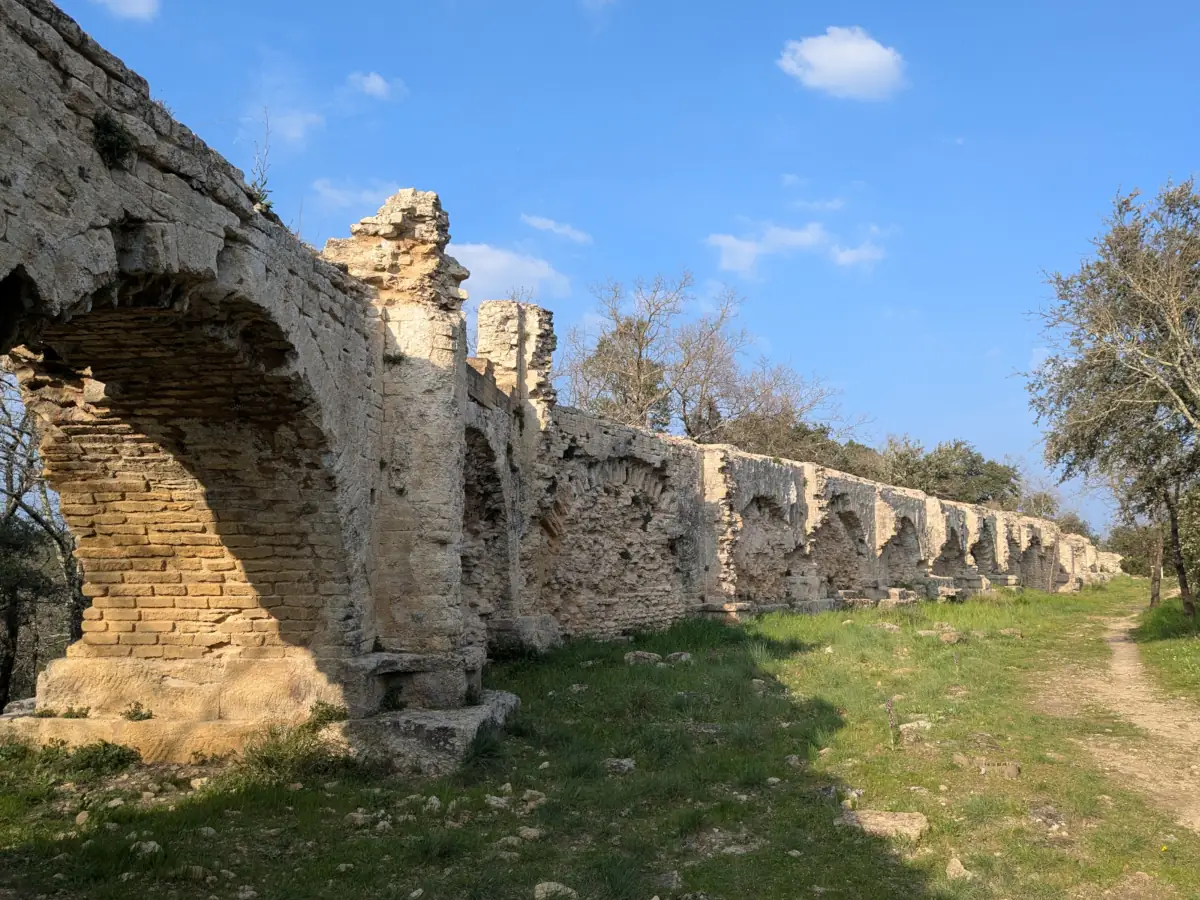A poetic walk through the garrigue along the traces of the Roman aqueduct near the Pont du Gard.
The Pont du Gard is the most iconic structure of a remarkable feat: an aqueduct that once carried water from the Fonteine d’Eure spring (near Uzès) to the city of Nemausus (Nîmes), over a distance of 50 km. Most of the channel was underground, winding through the countryside along natural contours, crossing valleys and ravines thanks to numerous engineering works.
The History of the Aqueduct
Built under Emperor Claudius (around 50 AD), the aqueduct enabled Nîmes to benefit from baths, fountains, and public latrines. It is a masterpiece of precision, with an average gradient of just 24 cm per kilometer! It remained in use until the 6th century, but its maintenance gradually ceased, leading to its abandonment.

The Arches of Vers-Pont-du-Gard
The most remarkable remains can be found between the Pont du Gard and the village of Vers, about 5 km apart. The GR6 trail leads hikers through the garrigue to the ruins of arches, last witnesses of a monumental achievement. Sections of the aqueduct line the path for several hundred meters, giving a glimpse of the structure’s impressive scale.
The arches are sometimes adorned with large limestone formations, created by water extractions—a precious resource—carried out by farmers to irrigate the arid lands.

A Walk through the Garrigue
The aqueduct crosses a landscape of thyme- and rosemary-scented hills, where the garrigue stretches endlessly over limestone soil. The evergreen foliage of holm oaks, kermes oaks, junipers, mastic shrubs, boxwoods, and strawberry trees creates a palette of greens in every season.
The Provençal countryside awakens in autumn and spring, when the rains quench the thirsty earth, reviving the springs and adorning the garrigue with countless shades of green and colorful blossoms. In places, the forest opens up to reveal olive groves—a reminder of the harmony between nature and cultivation.

The Pont de Bornègre
A few kilometers beyond Vers-Pont-du-Gard, a path connecting the villages of Argilliers and Saint-Maximin leads to another remarkable relic: the Pont de Bornègre. This aqueduct-bridge allowed the canal to cross the Bornègre stream. Today, only one arch remains of the original three, the other two having been deeply buried. Only their tops protrude, deeply grooved by centuries of passing carts and horses.

Find a guesthouse near the Pont du Gard
This hiking route offers a fascinating journey into Roman engineering and a sensory immersion in the Mediterranean garrigue, where history, nature, and heritage meet!



